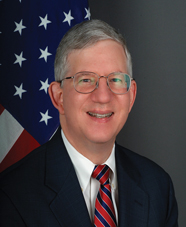
Weapons of mass destruction (WMD) are usually defined as nuclear, chemical, and biological weapons. These are grossly undiscriminating in their effects.
Chemical weapons were used by both sides in World War I. That led to people looking at biological weapons (BW). Fortunately, there's never been any large-scale use of BW. The United States developed nuclear weapons as a way of ending World War II, and others followed suit.
We don't know for sure how many WMD programs exist in the world, in part because one side effect of our success in nonproliferation is giving countries an incentive to conceal that they have these weapons, particularly chemical and biological.
There are five countries that can have nuclear weapons under the Nuclear Nonproliferation Treaty: the US, UK, France, Russia, and China. Pakistan, North Korea, and India have openly tested nuclear weapons, and it's widely believed that Israel possesses them as well.
There's concern that Iran may be interested in obtaining nuclear weapons; that has been assuaged for now because of the nuclear deal that was initiated in 2015. If Iran obtained nuclear weapons, people would worry about Saudi Arabia, Egypt, or Turkey pursuing them. If it looks like we're unable to adequately protect our allies against North Korea, there's concern that Japan or South Korea might get nuclear weapons.
The fact that only about a dozen or so countries either have or are potentially interested in developing nuclear weapons, despite the technical ability of many more countries to obtain them, indicates that we've done a good job communicating that the costs of having these weapons outweigh the benefits.
If a country has them, it's possible they could be stolen by terrorists, lost, or launched by mistake. Inherent in their possession is a certain risk that they'll be used. By definition, the fewer countries that have them, the lower those risks are.
Chemical weapons have been used on a relatively small scale in the past 20 years. We've dissuaded countries from using them on a massive scale on the battlefield, as they were designed to be used. For example, Syria has had to keep its use small and covert. After Syria recently used chemical weapons, the United States conducted airstrikes to try to prevent further use. Obviously, that's not good enough, but there is still positive value in that. We have to keep the pressure on.
The most likely use of weapons of mass destruction is by terrorists. Biological weapons in particular are potentially available to them. BWs are self-replicating, so if you can get some seed stock from a medical facility, and you have a basic level of knowledge, you can grow your own. The chance is always there, so biosecurity is extremely important.
We have accomplished a lot in nonproliferation. We've removed the easier outer layers of the onion. What's left is the hard part.